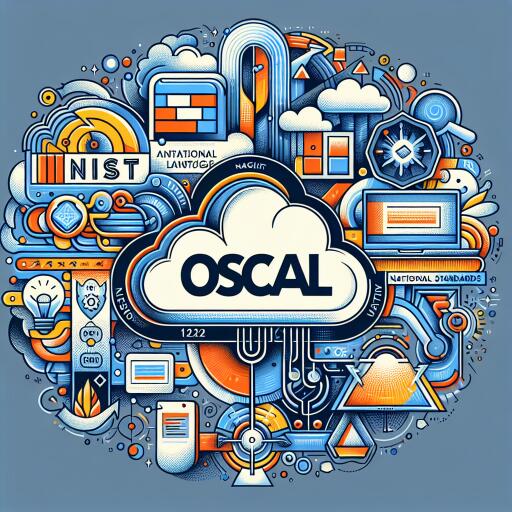Understanding OSCAL: A Key to Simplifying NIST and FedRAMP Compliance
Navigating the complexities of federal cybersecurity guidelines can be a daunting task for contractors and cloud service providers. The battle to stay compliant is ongoing, with many falling into the trap of only tightening their security protocols around audit times. This sporadic attention to compliance not only undermines security but also speaks to the challenging nature of cybersecurity management, with its plethora of controls, continuous monitoring requirements, POAMs, and audits.
Recognizing the burden that this complexity places on organizations, the government, alongside agencies like NIST (National Institute of Standards and Technology) and the Department of Defense (DoD), has been striving towards simplifying these compliance processes, particularly within FedRAMP. Among these efforts to streamline and make compliance more manageable is the introduction of OSCAL (Open Security Controls Assessment Language). But what exactly is OSCAL, and why is it pivotal for those navigating NIST and FedRAMP requirements?
Decoding OSCAL
OSCAL stands for Open Security Controls Assessment Language. It is a framework developed by NIST aimed at standardizing the language and formats used in the documentation, implementation, and assessment of security controls. In any organization, having everyone “speak the same language” is crucial for clarity and efficiency, and that is the primary objective of OSCAL.
It employs XML, JSON, and YAML formats to create a versatile, machine-readable language that not only facilitates human communication but also supports automation in continuous monitoring, auditing, and reporting. Through OSCAL, the process of documenting security controls, conducting assessments, and ensuring compliance becomes streamlined and uniform across different stakeholders including contractors, 3PAOs, and agencies.
Why OSCAL Matters
OSCAL serves as a foundation for promoting interoperability and understanding across various government and private sector entities involved in cybersecurity certification processes. This standardized approach is crucial for several reasons:
– **Enhanced Communication:** By providing a common language, OSCAL minimizes misunderstandings and ensures that everyone, from auditors to subcontractors, is on the same page.
– **Automation and Efficiency:** The machine-readable nature of OSCAL allows for the automation of tasks that are traditionally time-consuming and prone to human error, such as monitoring and report generation.
– **Future-Proofing Compliance:** OSCAL is a living framework, continuously improved to keep pace with evolving technology and security threats. Its community-driven development means that organizations can contribute to and benefit from its growth.
Furthermore, OSCAL’s structured format—comprising Catalog, Profile, Implementation, and Assessment layers—facilitates a clear pathway for organizations to identify, implement, and report on security controls.
Benefits Beyond Simplification
The introduction of OSCAL extends beyond just simplification of compliance processes. It represents a strategic move towards a more unified and secure digital government infrastructure. By adhering to OSCAL, organizations can:
– Improve their compliance process, leading to a quicker Authority to Operate (ATO) or Authority to Use (ATU).
– Leverage automation to focus human resources on more complex, non-automatable tasks.
– Ensure that they are employing the latest in security practices, as OSCAL evolves to address emerging threats.
It’s important to note that while OSCAL offers significant advantages, its adoption is not currently mandated for compliance. However, considering the efficiency and clarity it brings to the compliance process, its use is highly recommended.
Looking Forward
As we delve deeper into an era where cybersecurity threats are increasingly sophisticated and pervasive, the role of frameworks like OSCAL in fostering a standardized, efficient, and secure digital landscape cannot be overstated. While adoption is voluntary for now, the trajectory of OSCAL suggests it may become a cornerstone of cybersecurity compliance in the future.
For organizations aiming to achieve compliance with FedRAMP, NIST SP 800-53, or any other cybersecurity framework, leveraging OSCAL can markedly streamline their processes. Early adoption can afford organizations a competitive edge in compliance readiness and security posture.
As we watch OSCAL’s adoption and development unfold, its potential to revolutionize cybersecurity compliance and management is undeniable. For those navigating the complexities of NIST and FedRAMP, OSCAL not only matters—it could well be a game-changer.
For more information on how your organization can adopt and benefit from OSCAL, consider reaching out to experts in the field or engaging with the OSCAL community on platforms like GitHub. As the landscape of cybersecurity evolves, staying informed and adaptable is key to navigating the path to compliance and beyond.










